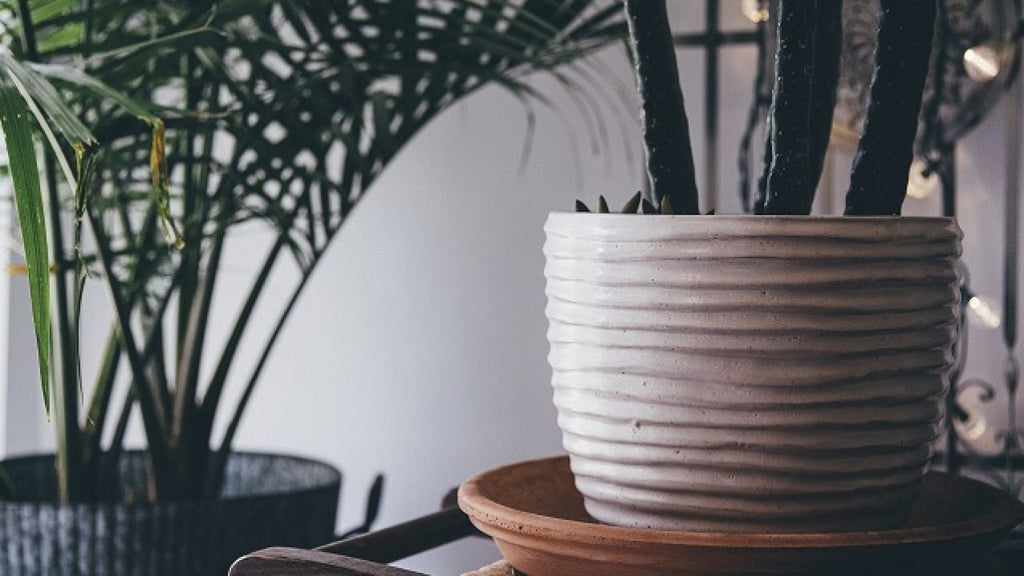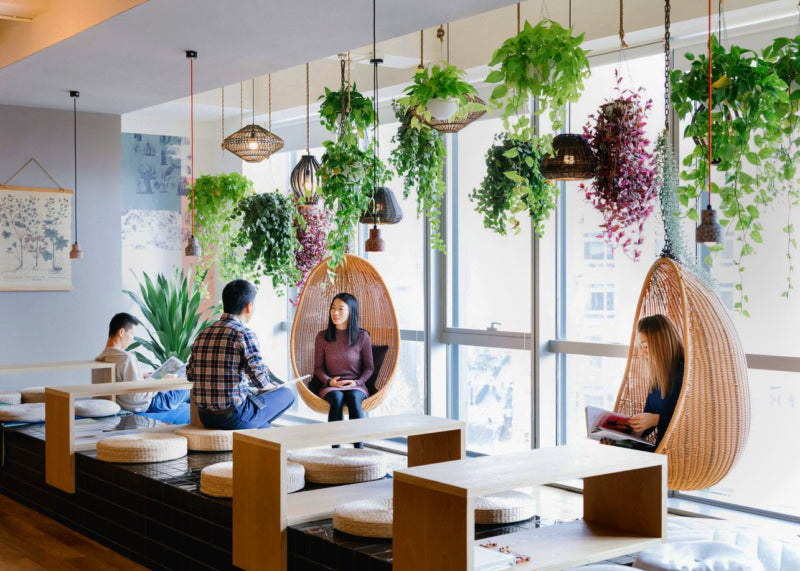Floor Tips and Tricks for Plant Parents

A plant is essentially a low-maintenance pet. Despite not having the same attitude as cats, and not enjoying belly rubs like your dog, these little guys can be just as messy! You'll often find your floors taking the brunt of plant-related messes. Indoor plants are a great addition to any home, but they can also damage your flooring if not properly protected. Here are some tips on how to best protect your flooring from indoor
1. Choose the right type of plant for your flooring
Some plants are more likely to cause damage to flooring than others. For example, plants with large leaves that retain moisture or plants with the sap may be more likely to cause staining or damage. Consider choosing plants with smaller leaves or those that are less likely to drip sap, such as snake plants or spider plants.
2. Use a plant saucer or tray
Using a plant saucer or tray will help prevent water from dripping onto your flooring. These are available in a variety of sizes and materials, including plastic and metal. Be sure to empty the saucer or tray frequently to prevent water from building up and causing damage. The best pots for your plants are well-drained unglazed clay pots with a hole in the bottom, which means the pots are well-drained. Make sure your plant pot also has a saucer, so any excess water you water your plant will catch on the saucer rather than on your floor.

Even with the best intentions, saucers are not always sufficient. Plants in clay pots made of terracotta are hazardous for the same reason they are porous. Water that is poured into your plant pot and then drained into the saucer can cause this porous material to become wet, resulting in water rings that could potentially cause the rotting of wood floors. The use of plastic trays, cork coasters, hanging plants, or lifted metal stands can keep your floors dry as well as your plants happy in their preferred containers.
3. Elevate plants
Elevating plants off the ground can also provide protection for your flooring. You can use a plant stand, pedestal, or even bricks to raise the pots off the ground. This will help prevent moisture and dirt from seeping into the flooring.
4. Use a rug or mat to protect the floor from indoor plants
Placing a rug or mat under your plants is another way to protect your flooring. This will help prevent scratches and stains caused by dirt or water. Choose a rug or mat with a non-slip backing to prevent slipping or tripping.
5. Immediately remove spills and dirt
If water spills or dirt gets on your flooring, be sure to clean it up immediately. This will help prevent staining or damage to the flooring. Use a damp cloth or paper towel to clean up spills and regularly sweep or vacuum up dirt.
6. Don’t drag your plants when moving them
You should avoid dragging your plants across your floors, regardless of whether they are hardwood, tile, laminate, or carpet. In this way, scratching, scuffing, and stains can be reduced. When moving a heavy plant, ask a friend for help or consider a small wooden plant dolly, which is both excellent solutions.
7. Plants and floors can die from overwatering
The best intentions don't always translate into the best results, and overwatering plants can result in overflowing water on the floor. The best solution to this problem is to clean up the water as soon as possible. Water can get stuck under cork coasters or plastic trays, even when you do your best to clean up plant messes. This can cause damaging watermarks on surfaces. It is possible to handle excess plant water damage-free with waterproof flooring.
8. Plants provide benefits beyond their aesthetic appeal
Plants are not only beautiful but also provide a number of health benefits. You can use them to decorate your home, as well as to bring a sense of natural life and happiness into your space. Additionally, they are capable of reducing stress, enhancing concentration, and improving the quality of the air in your home.
What Are The Benefits Of Indoor Plants?

A simple houseplant can transform a room's atmosphere and improve our overall well-being. But what are the benefits of plants in our homes? Let's explore:
Indoor plants purify the air in a home
One of the most incredible benefits of plants is that they can purify the air around us. They absorb pollutants like benzene, formaldehyde, and carbon monoxide and release clean oxygen into the air. The peace lily, spider plant, and snake plant are some of the top air-purifying houseplants.
Indoor plants boost the mood and reduce the stress of people
Studies have shown that indoor plants can reduce stress levels and boost mood. Plants can create a calming effect, which helps reduce anxiety and even lower blood pressure. Having a few plants around the house can make a significant difference in how you feel.
Indoor plants enhance productivity
Plants can also help improve focus and concentration, making them perfect for a home office or study room. According to research, having plants in your workspace can increase productivity by up to 15%.
Indoor plants improve the indoor aesthetics of a room
Plants have incredible natural beauty that can improve the aesthetics of any room. A well-placed plant can add texture, color, and life to a space. They act as a natural piece of décor, making a room feel more inviting.
Indoor plants increase humidity
Plants release moisture into the air, which can help keep our homes at an ideal humidity level. This can be especially beneficial during the winter months when heating systems cause the air to become dry.
Indoor plants promote better sleep
Some plants, like lavender, jasmine, and aloe vera, have the power to promote better sleep. These plants release fragrances that have soothing effects on the mind and body, which can help you sleep better.
Indoor plants improve physical health
Studies have shown that having plants in your home can have physical health benefits. Plants have been known to improve dry skin, asthma, allergies, and even headaches.
Final Thoughts on Protect Flooring From Indoor Plants

While indoor plants can bring natural beauty and health benefits to your home, they can also cause damage to your flooring. You can best protect your flooring from indoor plants by choosing the right type of plant, using a saucer or tray, elevating plants, using a rug or mat, and cleaning up spills and dirt immediately.
There are many benefits to having plants in your home. They purify the air, enhance productivity, improve aesthetics, and promote better sleep, among other benefits. With the wide variety of plants available today, it's easy to find the perfect ones for your home. So why not bring nature into your home and enjoy the many benefits that houseplants bring?
Other flooring blog articles you may want to read:
A GUIDE TO THE BEST OFFICE FLOORING
REASONS TO MAKE HOME IMPROVEMENTS AND RENOVATIONS
